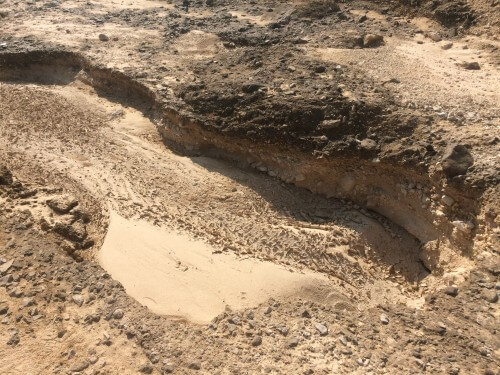One year after the environmental disaster in the Evrona reserve, as a result of an oil leak from a Katsa pipeline, the restoration operations of the Ministry of Environmental Protection and the Nature and Parks Authority continue • About 55,000 tons of the contaminated soil was evacuated, soil surveys were carried out, and technologies for soil restoration were tested

The Ministry of Environmental Protection publishes an update report on the restoration of the Evrona Nature Reserve, one year after the incident of the oil spill from the Katsa pipeline, which occurred on the night of December 3, 2014. The report shows that a year after the incident, in which thousands of barrels of crude oil flowed from the Eilat oil pipeline - Ashkelon of Katsa, to the nature reserve "Eravona Prairie" and "Masib Eilat" and polluted more than 1000 dunams of the area of the reserves, about 55,000 tons of contaminated soil were evacuated. The Ministry of Environmental Protection carried out soil surveys in the area of the spill and in the area of the reserve and the results indicate that the contamination extends to varying depths.
Contaminated soil was detected at the source of the leak up to a depth of 22 m. The Ministry of Environmental Protection and the Nature and Parks Authority required the Ktsa company to carry out an initial ecological survey in the Evrona reserve that will serve as the basis for the planned long-term monitoring program in the reserve area. Today in the reserve, a number of acacia trees that came into direct contact with the oil pollution show signs of severe damage and a large number of bushes, especially in the channels of the pollution, were also severely damaged by the pollution. However, the state of the deer population improved and several young individuals were observed. The summer heat "dried" the top layer of the contaminated soil and created a kind of hard layer of soil and oil.
In experiments to restore the soil in the reserve, which were carried out by 5 companies using different technologies, 4 companies presented a decrease in the concentrations of pollutants from a reasonable level to a very good level. The Ministry of Environmental Protection and the Nature and Parks Authority are examining the results of the experiment and will conduct a supplementary experiment on a wider scale. The Highway 90 area and the storage ponds in the reserve were found to be uncontaminated after the removal of contaminated land and are facing landscape restoration. Since the leak incident, the Ministry of Environmental Protection has conducted air quality sampling in which volatile organic substances, dust and odor were monitored. The results of the samples showed a significant and constant decrease in all parameters during the first weeks after the leak. And therefore, it was decided in the spring of 2015 to open the "Masib Eilat" and "Eravona Meadow" nature reserves to the general public. Periodic air monitoring is conducted once every several months in the area of the reserve at the behest of the Ministry of Environmental Protection.
The Ministry of Environmental Protection demanded that the Katsa Company present a risk survey and a plan to immediately reduce risks from the oil line and the danger of a spill reaching the coast of Eilat was significantly reduced. The economics department of the Ministry of Environmental Protection performed an economic assessment to estimate the extent of the general damage to the economy as a result of the spill incident and it is estimated at approximately NIS 141 million.
According to the government's decision, a directorate for the rehabilitation of Evrona was established to oversee the rehabilitation operations and includes representatives of the Ministry of Environmental Protection, the Nature and Parks Authority, the Eilot Regional Council, the Arava Drainage Authority and a representative of the green organizations.
More of the topic in Hayadan:
